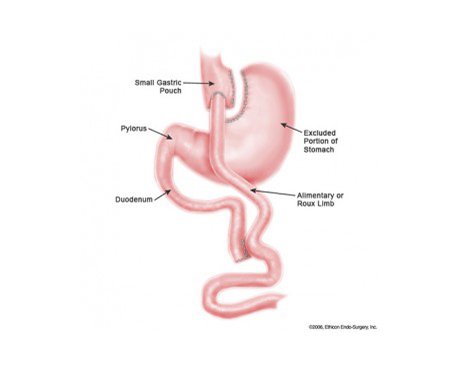What is gastric bypass surgery?
Gastric bypass surgery, a common weight-loss procedure in the U.S., changes the digestive tract by bypassing part of the stomach and small intestine. This limits both the amount of food patients can eat and the calories their body absorbs, making it both a restrictive and malabsorptive surgery.
What happens during the Roux-en-Y gastric bypass procedure?
Gastric bypass starts by dividing the stomach into a small upper pouch (about the size of a ping pong ball) and a larger lower portion. The upper pouch becomes the “new” stomach, making patients feel full quickly. It’s then connected directly to the small intestine, bypassing the duodenum and jejunum to reduce calorie absorption. The surgery is usually done laparoscopically, though sometimes an open incision is used.
Am I a good candidate for Roux-en-Y gastric bypass surgery?
Roux-en-Y gastric bypass is ideal for patients with a BMI ≥40, or 35–40 with obesity-related conditions like diabetes or hypertension. Patients must commit to lifelong dietary changes, eating small portions, avoiding high-fat and sugary foods, and taking supplements to prevent nutritional deficiencies.
No, sleeve gastrectomy permanently alters the shape of the stomach and it cannot be reversed.
No, sleeve gastrectomy permanently alters the shape of the stomach and it cannot be reversed.
Testimonials
Words from our patients
Our Locations
Choose your preferred location
Contact with us!
Have questions or concerns? Fill out the form below and we’ll be happy to assist you.






